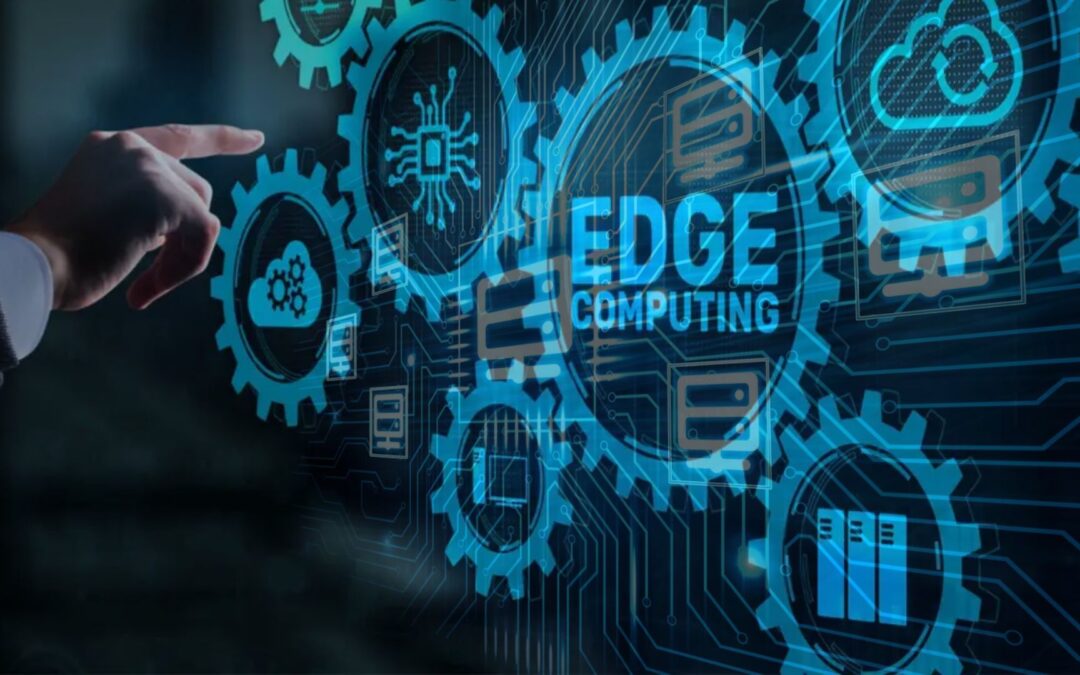
by admin | Aug 31, 2023 | Edge Computing, Technology
what is Edge Computing?
Edge computing is a technology paradigm that involves processing data closer to the source of its generation, rather than sending all data to a centralized cloud or data center for processing. This approach aims to reduce latency, improve response times, save bandwidth, and enhance the overall efficiency of data processing and analysis. While it’s not the latest technology (it has been gaining traction over the past few years), it remains a significant and evolving trend in the tech industry.
In traditional cloud computing models, data is sent to a central data center where it’s processed and analyzed. This works well for many applications, but it introduces latency, especially for applications that require real-time or near-real-time processing. Edge computing addresses this challenge by moving some of the processing closer to the “edge” of the network, closer to the devices generating the data.
Key features of edge computing include:
- Low Latency: By processing data locally, edge computing reduces the time it takes for data to travel back and forth between devices and a remote data center, resulting in faster response times.
- Bandwidth Savings: Sending only relevant or summarized data to the cloud instead of raw data reduces the amount of data that needs to be transmitted over the network, saving bandwidth and potentially reducing costs.
- Data Privacy and Security: Processing sensitive or private data locally can help maintain better control over data and mitigate risks associated with transmitting data over long distances.
- Offline Capabilities: Edge devices can continue to operate even when the network connection is lost or unreliable, as they can process data locally.
- Real-time Processing: Edge computing enables real-time processing and analysis of data, which is crucial for applications like IoT, industrial automation, and autonomous vehicles.
- Scalability: Distributing processing across multiple edge devices can help distribute the computational load and improve scalability.
- Reduced Cloud Dependency: While edge computing doesn’t replace cloud computing, it reduces the dependency on the cloud for every computing task.
Applications of edge computing include:
- Internet of Things (IoT): Edge computing is crucial for IoT devices that generate large volumes of data that need to be processed quickly, such as in smart cities, connected vehicles, and industrial sensors.
- Smart Grids: Edge computing can optimize the management and distribution of energy in real time, improving the efficiency of power grids.
- Video Surveillance: Real-time analysis of video feeds from security cameras can be performed at the edge to quickly identify threats or anomalies.
- Autonomous Vehicles: Edge computing enables fast processing of sensor data, allowing autonomous vehicles to make split-second decisions.
- Healthcare: Medical devices can process patient data at the edge to provide real-time insights, especially in critical situations.
- Retail: Edge computing can power personalized customer experiences, such as real-time inventory tracking and targeted advertising.
While edge computing offers numerous benefits, it also presents challenges such as managing a distributed computing environment, ensuring data consistency, and dealing with limited resources on edge devices. As technology continues to evolve, edge computing is likely to remain a crucial component of the broader computing landscape.
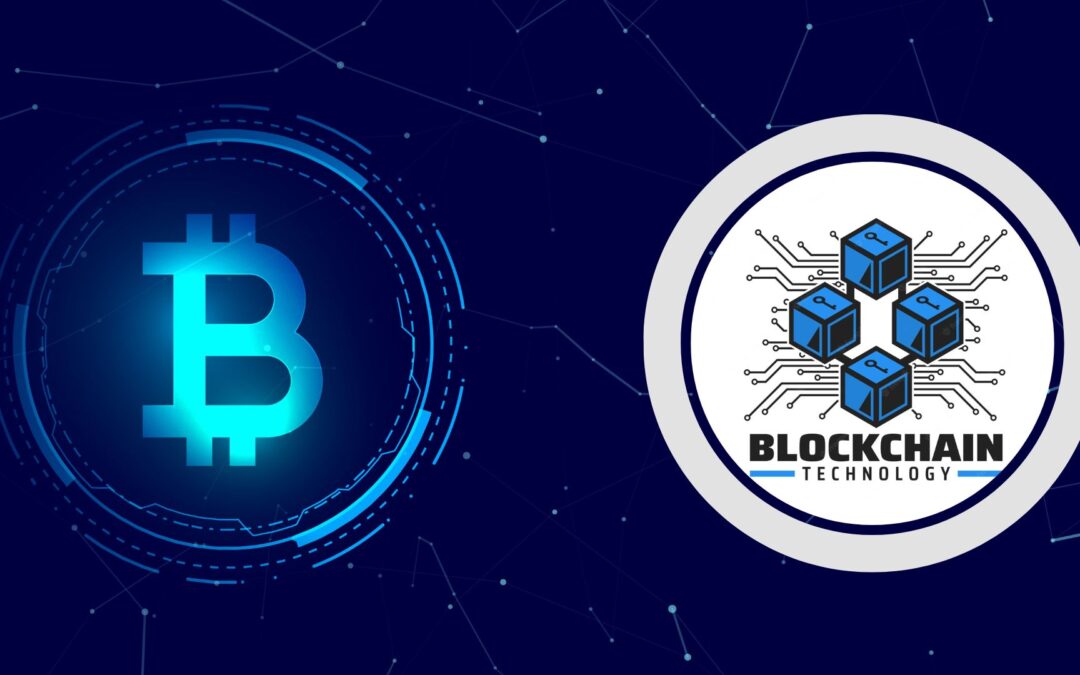
by admin | Aug 31, 2023 | Blockchain
What is Blockchain?
Blockchain is a decentralized and distributed digital ledger technology that records transactions across multiple computers in a way that is secure, transparent, and tamper-resistant. Each transaction, or “block,” is linked to the previous one, forming a chronological chain. This technology gained prominence as the underlying technology for cryptocurrencies like Bitcoin, but its applications have expanded beyond just digital currencies.
The key features of blockchain include:
- Decentralization: Unlike traditional centralized systems, blockchain operates on a network of computers (nodes) where each node has a copy of the entire ledger. This decentralized nature enhances security and eliminates the need for a single controlling authority.
- Transparency: Every participant in the blockchain network has access to the same information. Transactions are visible to all relevant parties, promoting transparency and trust.
- Immutability: Once data is added to the blockchain, it’s extremely difficult to alter or delete. This is achieved through cryptographic hashing and consensus mechanisms, making the blockchain tamper-resistant.
- Security: Transactions in a blockchain are verified through complex cryptographic algorithms, making it difficult for unauthorized parties to alter the data. This enhances the security of the system.
- Consensus Mechanisms: Blockchain networks use consensus algorithms to agree on the state of the ledger. Popular mechanisms include Proof of Work (PoW) and Proof of Stake (PoS), which ensure agreement among network participants.
- Smart Contracts: These are self-executing contracts with the terms directly written into code. They automatically execute actions when predefined conditions are met, reducing the need for intermediaries.
The role of blockchain in the latest technology landscape is significant and expanding:
- Cryptocurrencies and Finance: Blockchain’s most well-known application is in the realm of cryptocurrencies. It enables secure and transparent transactions without the need for intermediaries like banks.
- Supply Chain Management: Blockchain can provide end-to-end visibility in supply chains by recording every step of a product’s journey, reducing fraud, ensuring product authenticity, and improving traceability.
- Digital Identity: Blockchain can be used to create secure and tamper-proof digital identities, providing individuals with control over their personal data and reducing identity theft.
- Healthcare: It can improve the interoperability and security of electronic health records, ensuring accurate patient data sharing across healthcare providers while maintaining privacy.
- Voting Systems: Blockchain-based voting systems offer enhanced security, transparency, and tamper-proof record-keeping for elections.
- Real Estate and Land Title Records: Blockchain can simplify and streamline property transactions by providing a transparent and secure way to record ownership and transfer of real estate.
- Energy Trading and Grid Management: Blockchain can enable peer-to-peer energy trading, allowing consumers to buy and sell energy directly to one another.
- Cross-Border Payments: Blockchain can facilitate faster, cheaper, and more transparent cross-border transactions by eliminating intermediaries.
- Intellectual Property Protection: Blockchain can help creators prove ownership and protect their intellectual property rights.
- Digital Art and Collectibles: Blockchain technology is used to create verifiable scarcity and provenance for digital art and collectibles.
The role of blockchain in these areas is to create trust, security, and efficiency by eliminating intermediaries, ensuring data integrity, and enabling new models of interaction. However, it’s important to note that while blockchain holds significant promise, it’s not a solution for all problems and has its own challenges, including scalability and energy consumption.
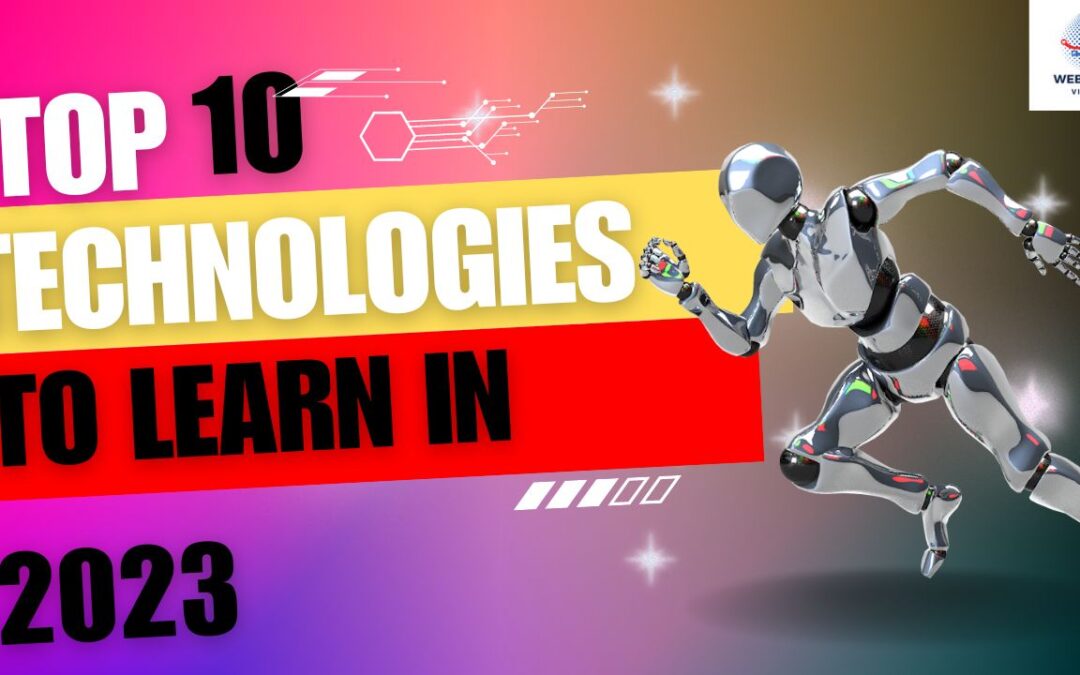
by admin | Aug 31, 2023 | Technology, Top 10 Technologies to Learn in 2023
Top 10 Technologies to Learn in 2023
The Golden word of a wise man is “One machine can do the work of fifty ordinary men and no machine can do the work of one extraordinary man”.Furthermore, to become unprecedented in the 21st century you must be refreshed with the ongoing innovation of acquiring advancement in IT.
Some technologies were gaining momentum around that time and are likely to still be relevant in 2023. Here’s a list of the top 10 technologies that you might consider learning in 2023:
AI and ML continue to drive innovation across industries, from healthcare to finance. Learning how to build and deploy AI models could be immensely beneficial.
Blockchain technology is expanding beyond cryptocurrencies, finding applications in supply chain management, digital identity verification, and more.
The rollout of 5G networks is expected to continue, offering increased data speeds and low latency, enabling new possibilities in IoT, AR/VR, and more.
With the growth of IoT, edge computing is becoming crucial. It involves processing data closer to the source rather than in centralized data centers.
As digital threats continue to evolve, expertise in cybersecurity will remain essential to protect sensitive information and systems.
Although still in its early stages, quantum computing has the potential to revolutionize various fields by solving complex problems that are currently infeasible for classical computers.
AR and VR are finding applications in gaming, education, training, and even remote work, creating a demand for developers with expertise in these areas.
IoT involves connecting everyday devices to the internet, enabling them to collect and exchange data. It’s a field with immense growth potential.
With the rise of chatbots, virtual assistants, and language-based AI applications, NLP skills are highly valuable.
As sustainability becomes a bigger focus, skills in renewable energy technologies like solar, wind, and energy storage could be in high demand.
Remember that the relevance of these technologies can vary based on your interests, career goals, and the industries you’re involved in. It’s also important to stay updated with the latest trends and advancements in the tech world as you continue your learning journey.
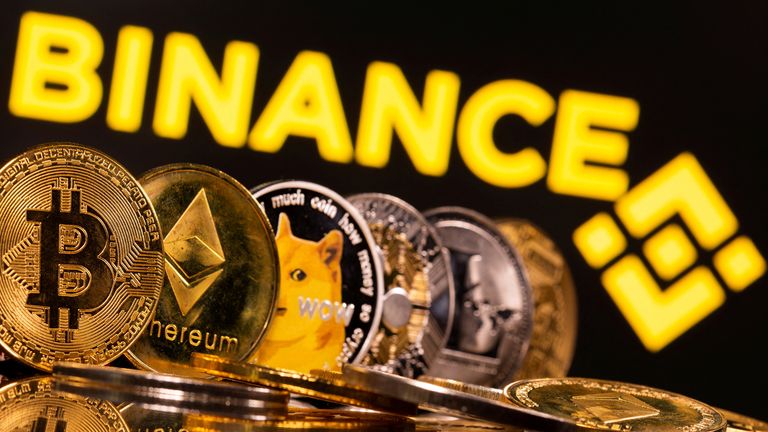
by admin | Aug 26, 2023 | Binance, a Crypto Giant, Grapples with Legal Challenges in Russia, Technology
Binance, a Crypto Giant, Grapples with Legal Challenges in Russia
- Introduction
- Binance: Leading Global Cryptocurrency Exchange
- Legal Scrutiny and Developments in Russia
- Regulatory Landscape in Russia
- Evolution of Cryptocurrency Regulations
- Recent Shifts in Regulatory Approach
- Binance’s Operations in Russia
- Binance’s Popularity and Services in Russia
- Regulatory Concerns Raised by Russian Authorities
- Key Legal Challenges
- Compliance with AML and KYC Regulations
- Unauthorized Operations and Regulatory Violations
- Response from Binance
- Engaging with Regulatory Authorities
- Implementing Enhanced Compliance Measures
- Impact on the Cryptocurrency Industry
- Market Sentiment and Investor Confidence
- Potential for Regulatory Reform and Clarity
- International Ramifications
- Global Nature of Binance’s Operations
- Collaborative Efforts between Countries
- Future Outlook
- Path Forward for Binance and Regulatory Authorities
- Implications for the Cryptocurrency Ecosystem
- Conclusion
- Balancing Innovation with Regulatory Compliance
- Binance’s Journey Amid Legal Challenges
1. Introduction:
Binance, recognized as one of the foremost players in the cryptocurrency space, is currently navigating a complex legal landscape in Russia. This report delves into the legal risks Binance faces over its operations in the country and the potential ramifications for both the exchange and the broader cryptocurrency industry.
2. Regulatory Landscape in Russia:
Russia’s stance on cryptocurrency regulations has evolved over time, reflecting a balance between fostering innovation and safeguarding financial stability. Recent regulatory shifts have placed increased scrutiny on cryptocurrency activities within the country.
3. Binance’s Operations in Russia:
Binance has garnered significant popularity in Russia, offering a range of cryptocurrency trading and investment services to its users. However, the exchange’s activities have raised concerns among Russian regulatory authorities, leading to legal challenges.
4. Key Legal Challenges:
Binance’s legal challenges in Russia revolve around compliance with anti-money laundering (AML) and know-your-customer (KYC) regulations. Authorities have also expressed concerns over unauthorized operations and potential regulatory violations associated with the exchange’s activities.
5. Response from Binance:
In response to the legal challenges, Binance has engaged with Russian regulatory authorities to address concerns and establish a framework for compliance. The exchange has undertaken efforts to enhance its compliance measures and align with local regulations.
6. Impact on the Cryptocurrency Industry:
The legal issues faced by Binance have had an impact on market sentiment and investor confidence not only in Russia but globally. The situation highlights the need for clear regulatory guidelines and the potential for regulatory reform to provide more clarity for industry participants.
7. International Ramifications:
Binance’s operations extend beyond Russia, and its legal challenges have international ramifications. Cryptocurrency exchanges that operate across borders must navigate various regulatory regimes and collaborate with multiple jurisdictions.
8. Future Outlook:
The path forward for Binance involves continued collaboration with regulatory authorities to establish a compliant framework. The situation also prompts discussions about the regulatory landscape for cryptocurrencies and its implications for the industry’s growth.
9. Conclusion:
The case of Binance in Russia underscores the delicate balance between fostering innovation in the cryptocurrency space and adhering to evolving regulatory standards. As the legal challenges unfold, Binance’s response and the regulatory developments will likely shape the future trajectory of the cryptocurrency ecosystem, influencing how exchanges and regulators interact in the global arena.
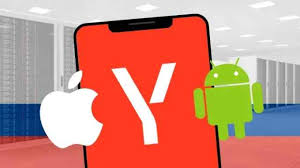
by admin | Aug 26, 2023 | Navigating the Use of Android and Apple Devices in Russia, Technology
Navigating the Use of Android and Apple Devices in Russia: A Comprehensive Guide
- Introduction
- Technology Landscape in Russia
- Popularity of Android and Apple Devices
- Choosing the Right Device
- Android Devices: Diversity and Customization
- Apple Devices: Ecosystem and User Experience
- Device Availability and Purchase
- Retail Stores and Authorized Resellers
- Online Marketplaces for Device Purchase
- Setting Up Your Device
- Language and Region Settings
- Adding Russian Keyboard and Input Methods
- Network and Connectivity
- Mobile Operators and SIM Cards
- Wi-Fi Availability and Usage
- Downloading Apps
- Google Play Store for Android
- Apple App Store for iOS
- Navigating Language and Localization
- Language Preference in Apps
- Language Settings for Voice Assistants
- Cultural and Legal Considerations
- Data Privacy Regulations
- Respecting Local Customs and Norms
- Tech Support and Repair Services
- Authorized Service Centers
- Online Support Forums and Resources
- Conclusion
- Embracing the Digital Experience in Russia
- Seamlessly Integrating Android or Apple Devices
1. Introduction:
Russia’s tech-savvy population has led to the widespread adoption of both Android and Apple devices. This guide offers insights on how to effectively use these devices in Russia’s unique technological and cultural context.
2. Choosing the Right Device:
When choosing between Android and Apple devices, consider factors such as Android’s device diversity and customization options versus Apple’s ecosystem and seamless user experience.
3. Device Availability and Purchase:
You can purchase Android and Apple devices from various retail stores, including authorized resellers and flagship stores. Alternatively, explore online marketplaces that offer a wide range of options.
4. Setting Up Your Device:
During the initial setup, choose Russian as the device language and set the region to Russia. Additionally, add the Russian keyboard for easy text input.
5. Network and Connectivity:
Select from a range of mobile operators for SIM card options, catering to various data and call needs. Utilize Wi-Fi connections, which are widely available in public spaces.
6. Downloading Apps:
Access the Google Play Store for Android devices and the Apple App Store for iOS devices to download applications tailored to your interests and needs.
7. Navigating Language and Localization:
Customize language preferences in apps to enhance user experience. Adjust language settings for voice assistants like Siri or Google Assistant.
8. Cultural and Legal Considerations:
Be aware of data privacy regulations in Russia and how they impact your device usage. Respect local customs and norms when using your device in public spaces.
9. Tech Support and Repair Services:
In case of technical issues, authorized service centers offer reliable assistance. Online support forums and resources can also provide solutions to common problems.
10. Conclusion:
Embrace the digital experience in Russia by seamlessly integrating Android or Apple devices into your daily life. With the right setup and knowledge, you can navigate the technological landscape with ease and efficiency.

by admin | Aug 26, 2023 | Russia, Technology
Russia’s Advancements in Developing a Homegrown Versatile Biological System Inspired by Android
- Introduction
- Overview of Russia’s Biological System Development
- The connection between Android and Biological Systems
- Keyphrases and SEO Tools
- Importance of SEO-friendly Content
- Utilizing Yoast SEO Software for Optimization
- Russia’s Homegrown Biological System
- Evolution of Biological Engineering in Russia
- Objectives and Scope of the Project
- Inspiration from Android Technology
- Parallels between Android and Biological Systems
- Leveraging Android’s Adaptability for Biological Applications
- Technical Aspects of the Project
- Genetic Modification and Editing Techniques
- Integration of Sensors and Feedback Mechanisms
- Benefits and Applications
- Medical Advancements and Healthcare Innovations
- Environmental Monitoring and Biodiversity Conservation
- Challenges and Ethical Considerations
- Biosecurity and Potential Risks
- Ethical Implications of Synthetic Biology
- Collaborations and International Response
- International Scientific Collaborations
- Global Reaction to Russia’s Bioengineering Endeavors
- Future Prospects and Impact
- Potential Transformative Effects on Biotechnology
- Shaping Russia’s Position in the Global Bioengineering Landscape
- Conclusion
- Recap of Achievements and Milestones
- Balancing Innovation with Responsibility in Biological Advancements
1. Introduction:
Russia’s scientific landscape has witnessed a remarkable stride in recent years as it delves into the realm of biological engineering with an innovative twist. Drawing inspiration from the world of technology, particularly Android systems, Russia has embarked on a groundbreaking journey to create a versatile and adaptable homegrown biological system. This report explores the confluence of biology and technology, analyzing how Russia’s advances in this field are shaping the future.
2. Keyphrases and SEO Tools:
In the era of digital information dissemination, SEO-friendly content plays a pivotal role in ensuring that valuable information reaches the intended audience. Leveraging tools such as the Yoast SEO software allows content creators to optimize their material for search engines, enhancing its visibility and accessibility.
3. Russia’s Homegrown Biological System:
Russia’s strides in biological engineering have evolved over the years, with a keen focus on developing a homegrown versatile biological system. The project’s primary objectives include revolutionizing medical treatments, enhancing environmental monitoring, and fostering innovation in synthetic biology. The project’s scope extends to multidisciplinary collaborations, drawing experts from genetics, bioinformatics, and computer science.
4. Inspiration from Android Technology:
An intriguing parallel emerges between the adaptability of Android systems and the potential of biological systems. The adaptability, feedback mechanisms, and scalability inherent in Android’s design have inspired researchers to explore similar attributes in biological contexts. By harnessing the versatility of Android, Russia aims to develop a biological system that can dynamically respond to changing environmental factors.
5. Technical Aspects of the Project:
Russia’s endeavor involves employing cutting-edge genetic modification techniques to engineer biological entities capable of autonomous adaptation. Additionally, the integration of sensors and feedback mechanisms draws inspiration from Android’s sensory technology, enabling real-time data acquisition and analysis within the biological system.
6. Benefits and Applications:
The implications of Russia’s work are far-reaching. In the medical field, this technology could pave the way for personalized treatments, drug delivery systems, and regenerative medicine breakthroughs. Moreover, the integration of biological systems with environmental monitoring could aid in biodiversity conservation and pollution control.
7. Challenges and Ethical Considerations:
As with any pioneering endeavor, challenges arise. Ensuring biosecurity and managing potential risks associated with genetically modified organisms is of paramount importance. Ethical considerations also come to the fore, requiring careful navigation of the ethical implications surrounding synthetic biology and genetic manipulation.
8. Collaborations and International Response:
The project has sparked interest globally, leading to collaborative efforts between Russian researchers and international experts. The international response has been a mix of curiosity and caution, with discussions centered on regulatory frameworks, information sharing, and responsible innovation.
9. Future Prospects and Impact:
The successful realization of Russia’s homegrown versatile biological system could reshape the biotechnology landscape on a global scale. It has the potential to set new benchmarks for innovation, foster interdisciplinary collaborations, and position Russia as a frontrunner in the field of bioengineering.
10. Conclusion:
Innovation often walks a fine line between progress and responsibility. Russia’s strides in developing a homegrown versatile biological system demonstrate the harmonious convergence of biology and technology. As this journey unfolds, it is crucial to strike a balance between pushing the boundaries of scientific advancement and safeguarding ethical considerations, ensuring that the path forward is one of responsible innovation.






